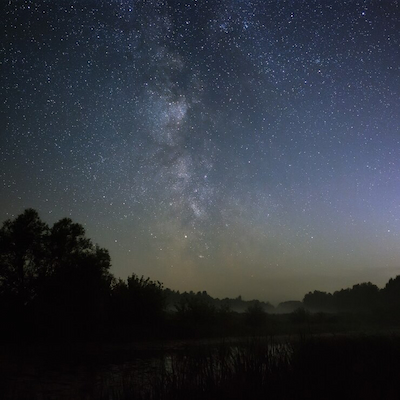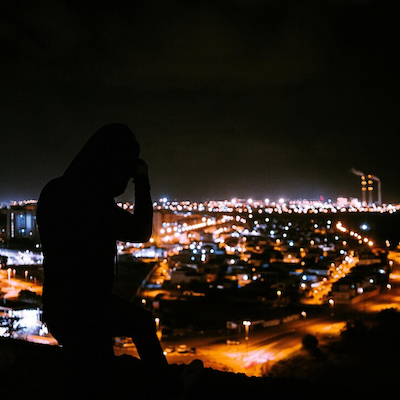
Astronomy is one of the most fascinating sciences, allowing humans to explore the cosmos and understand the vastness of the universe. Since ancient times, observing stars and planets has been an essential human activity, whether for navigation, agricultural calendars, or sheer curiosity. With technological advancements, astronomy has become more accessible, enabling both enthusiasts and professionals to make the most of every observing opportunity. However, observing conditions can vary greatly — especially when it comes to short nights, which are marked by limited periods of darkness.
Short nights, common in some regions during the summer months, pose significant challenges for astronomical observation. Nevertheless, with the right approach and careful planning, it’s possible to optimize observation sessions during these shorter nights. In this article, we’ll explore how these sessions work, the benefits of optimizing them, and practical tips to maximize your experience. The goal is to equip you with the tools to make the most of every chance to observe the night sky, even when time is short.
How Observation Sessions Work on Short Nights
Observation sessions on short nights rely on thoughtful planning and selecting the best possible moments for stargazing. With less darkness available, amateur and professional astronomers need to be strategic about when and how they observe. The first step is identifying when your target celestial objects will be visible. This typically involves using astronomy apps or planetarium software that can forecast the positions of stars, planets, and constellations.
Choosing a suitable observation site is also critical. Areas far from city lights and light pollution offer the best visibility. Planning should also take into account weather conditions — clouds and humidity can greatly reduce the quality of your session. Equally important is efficient use of your time. Prioritize the most interesting and accessible objects based on your location and available darkness.
Observation techniques play a vital role too. Using the right binoculars or telescopes can significantly enhance your ability to spot finer details. Incorporating techniques such as astrophotography can also add excitement to your session, even with limited light. Familiarity with your equipment and its settings is key to getting the most out of a short night of stargazing.
Finally, collaboration with other astronomy enthusiasts can enhance your experience. Joining local astronomy groups or attending star parties can offer valuable insights and shared knowledge. These communities not only improve your skills but also make the hobby more enjoyable and social.

Benefits of Optimizing Observation Sessions on Short Nights
Optimizing your observation sessions during short nights brings several benefits that can significantly elevate your stargazing experience. First, it allows you to use your time more efficiently. With proper planning, you can make the most of every available minute of darkness, ensuring that you still get to observe a wide range of celestial phenomena.
Another key benefit is skill development. Short nights challenge observers to become more proficient in telescope handling, sky navigation, and photographic techniques. Every session becomes a learning opportunity, helping you grow more confident and capable in your practice.
Optimized sessions can also lead to unexpected discoveries. Occasionally, rare events like meteor showers or comets occur with little warning. Being prepared increases your chances of witnessing these memorable moments — and capturing them in photos or notes to share with the astronomy community.
Lastly, optimizing short-night sessions strengthens community bonds. By sharing your planning methods, observing strategies, and results, you contribute to and benefit from a supportive network of stargazers. This exchange of experience makes astronomy not just educational, but deeply rewarding on a personal and social level.
How to Plan and Optimize Observation Sessions on Short Nights
To effectively plan and optimize stargazing sessions on short nights, follow these practical guidelines:
-
Choosing the best locations for stargazing: Look for areas far from city lights — parks, mountains, or rural settings are ideal. Make sure the horizon is visible and avoid spots with obstructions like trees or tall buildings.
-
Essential astrophotography gear for short nights: Invest in quality gear such as a telescope, binoculars, and a camera designed for night photography. Don’t forget tripods and adapters for image stability.
-
Stargazing techniques to maximize your time: Learn how to quickly focus your equipment, apply filters, and configure camera settings. Get familiar with the constellations you plan to observe and use mobile apps to track them in real time.
-
Atmospheric considerations for observation: Always check the weather forecast and aim for clear skies. Avoid nights with high humidity or air pollution, as they affect image clarity and sky visibility.
-
Strategies for astrophotography during short nights: Since time is limited, consider long exposures and higher ISO settings to maximize captured light. Plan your shots in advance and follow a simple checklist during the session.
-
Identifying constellations on short nights: Know which constellations will be visible in your hemisphere and season. Use star maps or digital tools to identify them quickly and accurately.
With these tips, you can plan and enjoy your stargazing even when time is short. Preparation is key to ensuring that every moment under the stars is well spent and rewarding.

Did You Enjoy Learning About Optimizing Observation Sessions on Short Nights?
Optimizing observation sessions on short nights can truly transform the experience for any astronomy enthusiast. With thoughtful planning and the right techniques, even a brief window of darkness becomes an opportunity to explore, learn, and connect with the night sky.
We hope this guide has inspired you to dive deeper into the fascinating world of astronomy. Don’t hesitate to explore further, apply what you’ve learned, and discover new ways to make the most of every short night under the stars.
Frequently Asked Questions
How can I optimize observation sessions on short nights?
Choose locations with minimal light pollution and plan your session based on the timing of celestial events. Use apps to locate stars and planets quickly.
What equipment is needed for good observations?
A telescope or binoculars are ideal. A star chart helps identify constellations. Bring comfortable seating and warm clothes for long periods outdoors.
Can I observe even on cloudy nights?
Yes, though visibility may be reduced. Some bright constellations can still be visible through light cloud cover. Use apps to track what’s behind the clouds.
How can I make better use of limited time during short nights?
Create a checklist of objects to observe. Focus on a few targets rather than scanning the entire sky. This keeps your session focused and efficient.
What tips help improve the overall observation experience?
Bring snacks and drinks. Soft music can enhance the mood. Take notes of what you see — it helps you learn and track your progress.
Is it worth observing on nights with moonlight?
Yes! While the Moon can wash out faint stars, it’s a fascinating object to observe in itself — especially with detail-rich lunar photography.
Can I still do astrophotography with basic gear?
Absolutely. Even with a smartphone and tripod, you can capture wide-field shots of the night sky, especially when using long exposure apps.
How do I stay motivated when time is short?
Set realistic goals. Observing even one new constellation or taking a single photo can be fulfilling. Remember — quality over quantity.
Are short nights good for beginner astronomers?
Yes. They offer a manageable timeframe to practice identifying constellations, using equipment, and planning sessions without feeling overwhelming.

